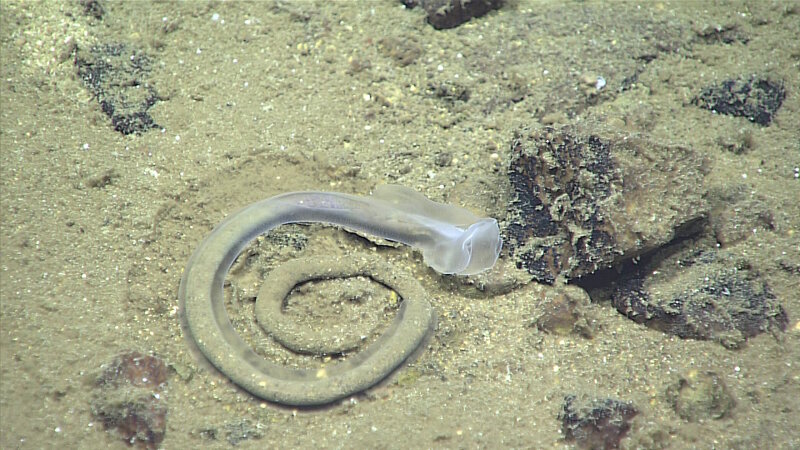During Dive 3, we explored a canyon along the trench wall in the vicinity of Sirena Deep, one of the deepest spots in the Mariana Trench. Beginning at a depth of 4,983 meters, this was one of the deepest dives planned during this leg of this expedition. At the start of the dive, the seafloor was composed of fractured rock, which appeared to be volcanic in origin. The rocks were covered in a thick layer of sediment, supporting a theory that canyons act as funnels to accumulate high concentrations of sinking organic material. We collected a rock from this area for further analysis. As we moved upslope, there was a transition to layered sedimentary rocks. We collected a second rock from this area to compare the geological features of these two sections of the Sirena Canyon. Although the density of animals was fairly low throughout the dive, we saw a large variety of different kinds of animals living at these depths, including multiple species of sea cucumbers, benthic ctenophores, several species of crinoids, three types of sponges, Munidopsis squat lobsters, an acorn worm, and two types of isopods. We also saw polychaete worms and at least four different types of fish swimming in the water column and through our field of view. We collected one crinoid, one holothurian, and a cladhorizid sponge that we believe may be a new species. We look forward to finding out!
